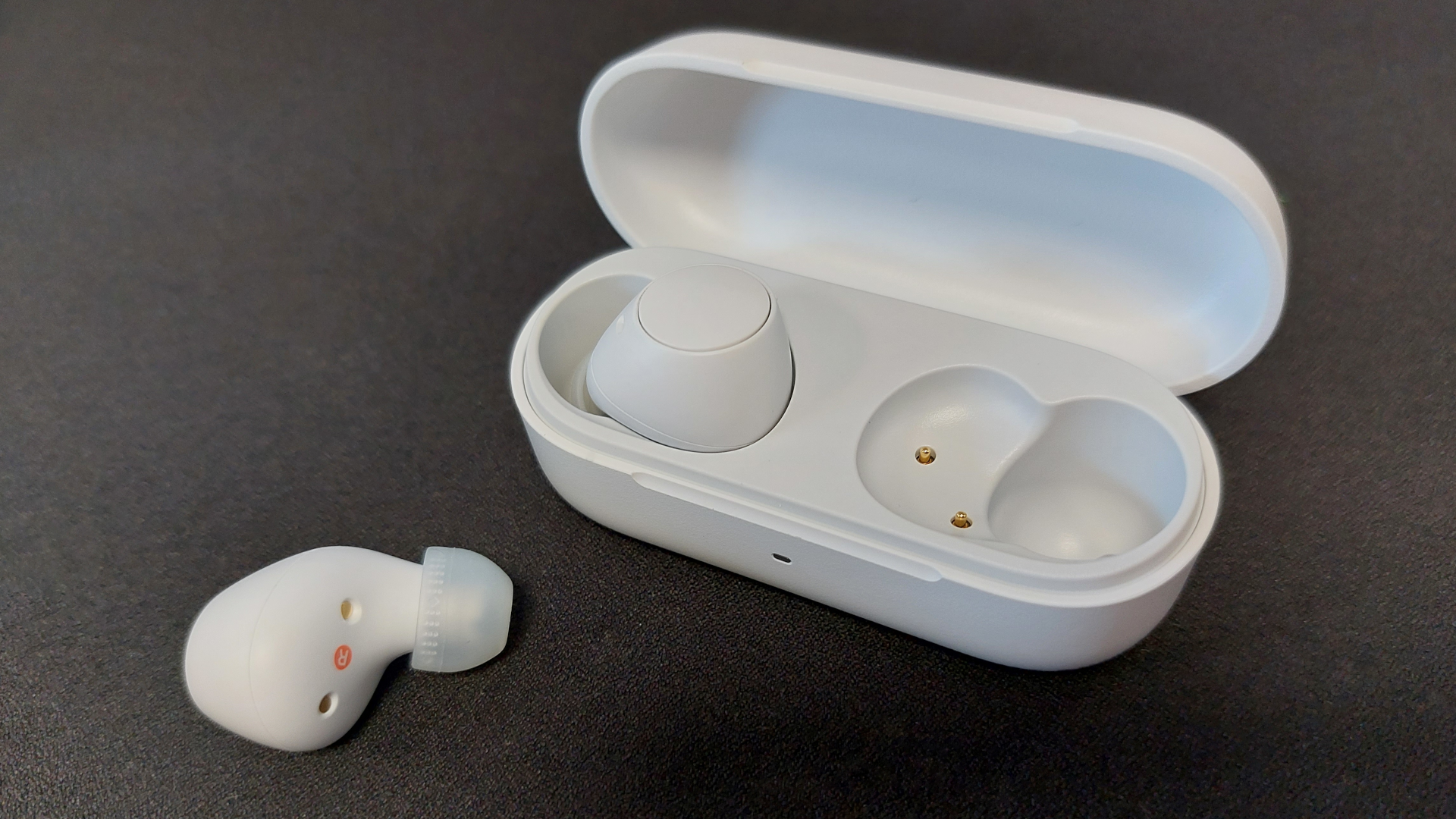
Samsung Galaxy S25 Ultra Review

For many years, Samsung has typically been one of the first Android phone makers to deliver a hot new device with the latest Qualcomm chips at the start of the new year. The Samsung Galaxy S25 Ultra ends up in an unenviable position in 2025, though, as it follows on the heels of the OnePlus 13, RedMagic 10 Pro, and Asus ROG Phone 9, all of which have shown solid advancements to their own product lines and just how capable the new Snapdragon 8 Elite chipset is. The Samsung Galaxy S25 Ultra may be the best that Samsung can do, but it really has to knock it out of the park to stay at the top of the smartphone class, especially when its $1,299 starting price is the highest of these four devices.
Samsung Galaxy S25 Ultra – Design and Features
Samsung has made some of the most significant design changes for the Ultra line in several years with the Galaxy S25 Ultra, and yet it still looks pretty same-y. The new design has curved corners and flat sides – a shift away from the angular corners and rounded sides of predecessors. But the Galaxy S25 Ulta remains a large slab. The back of the phone is largely featureless save for the three large and two small bumps for the camera array and laser auto-focus system.
While I can’t say the color isn’t pretty, it’s not jaw-dropping. OnePlus is out there etching wood grain into the back of its OnePlus 13, RedMagic is doing all sorts of bold craziness (including frost-like geometric patterns and see-through panels), and Samsung just has flat, muted colors. This is coming from the company that launched the S20 with a vibrant back panel that provided a close approximation to a bubble catching the sunlight. Sure, Samsung’s going with supposedly robust Gorilla Armor 2 glass on the front and back and titanium in the frame of the phone, but these lend little to the visual appeal of the device, and to my knowledge, none of them prevent the phone from shattering on concrete like any flagship phone out there.
The camera setup on the back of the S25 Ultra is also a curious and worrying choice. While the layout is familiar, each of the larger bumps now has a small relief at the bottom – think the pipes in Mario games. This might provide ever-so-slightly more visual intrigue, but the ability of these gaps to gather debris is all but guaranteed, and on the off chance something got under there with a little leverage, I’d expect some damage to the camera itself.
The one thing setting the S25 Ultra apart from its competition is the S Pen, which still has a little slot at the bottom edge of the phone. It tucks away conveniently, and springs out with a pleasing little pop. And it provides responsive stylus inputs for handwriting and doodling with far greater accuracy than a finger can manage. This year, Samsung took away the Bluetooth connection to the phone, which enabled some extra features, like the ability for the S Pen to serve as a remote camera shutter button though. I’m reminded of when Samsung dropped the SD card slot from its phones – sure, most people might have not been using it, but that didn’t make it any less convenient to have. And on that note, I guess I shouldn’t be surprised that Samsung includes just a single SIM card in its tray. It supports two eSIMs, but more is always better in my book, and Samsung could have offered more.
Beyond the stylus and minor aesthetic choices, the Galaxy S25 Ultra is much like all the other flagship smartphones out there. It’s massive (6.41 x 3.06 x 0.32 in), weighty (218 grams), a little hard to use one-handed, and built well. You’ll get IP68-grade water and dust protection, which is about as good as it gets, though OnePlus went above and beyond this year by adding IP69 protection that can hold up against hot water jets as well as submersion.The anti-glare finish does a great job cutting down on reflections without impacting image quality from the display. Beyond that, though, the S25 Ultra’s screen isn’t blowing the competition out of the water.
Samsung fits in an excellent display. The screen stretches 6.9 inches across and has a sharp 1440×3120 resolution. The screen can reach a peak 120Hz refresh rate but can drop down as low as 1Hz to conserve energy. It’s bright and vibrant, making it a joy to watch shows and movies or play games on. The display is paired with potent speakers as well, which provide clear stereo audio and enough volume to listen to podcasts while tackling chores or taking a shower.
Samsung continues to situate a fingerprint scanner underneath the display, and it proves quick and reliable for unlocking the phone. Facial recognition is also supported.
The overall quality of the Galaxy S25 Ultra isn’t surprising. Samsung knows how to make a great phone, and this line is meant to be the cream of the crop. But it feels just a bit less special this year because it hasn’t done much to change from prior years while its competitors have. Sure, it has the S Pen, albeit somewhat neutered this year. Sure, it has Samsung DeX, giving it the ability to work like a portable computer, but that capability may not be far away from seeing broader availability on Android devices. And AI features are rolling out so fast and loose that none of them seem unique to any given phone, no matter how much Samsung hypes their capabilities.
Samsung Galaxy S25 Ultra – Software
The Galaxy S25 Ultra launches with Android 15, and Samsung continues to promise seven years of Android OS and security updates, which is great to see from a device as expensive as this. Samsung still provides a flexible take on Android with its One UI, giving you plenty of tools to tailor it to the look and feel you prefer. While I haven’t found anything objectionable about Samsung’s approach to the operating system, I continue to be irked by Samsung’s attempts at locking down the ecosystem. Samsung has a handful of default apps that replace typical Google apps you’d find on almost any other Android phone, such as Chrome and Calendar. Samsung then uses its first-party apps to integrate some features, like its AI summarization of web pages or its ability to have AI check your calendar for events. If you want to take advantage of those features, you end up stuck with Samsung’s apps, and that can mean a big ecosystem shift.
Samsung Galaxy S25 Ultra – Gaming and Performance
While the Samsung Galaxy S25 Ultra may have a Snapdragon 8 Elite chip akin to that in other recent Android flagships, Samsung’s is a special version with souped up cores. It features six cores running at the same 3.53GHz as its competitors but two cores are boosted to 4.47GHz, up from the 4.32GHz you’d see in others like the OnePlus 13. It sounds like a minor difference, but it is enough to give Samsung a slight performance edge. In Geekbench 6’s single-core CPU test and Vulkan GPU test, the Galaxy S25 Ultra offered the fastest speeds I’ve seen from an Android phone. It edged out the OnePlus 13, RedMagic 10 Pro, and Asus ROG Phone 9 in these tests by as much as 6% and only fell to the ROG Phone 9 in the multi-core test by 0.27%.
The Galaxy S25 Ultra also had impressive GPU performance results in 3DMark. But this is also where the cracks started to show. For one thing, it didn’t manage to jump ahead of the Asus, OnePlus, or RedMagic in these tests. In some cases, it was even a good ways behind, especially since RedMagic basically proved itself nearly magical with how much performance it could eke out of the GPU. But the bigger problem for Samsung was its ability to sustain.
Invariably, after one benchmark run, the performance of the S25 Ultra would throttle for subsequent runs, sometimes by upwards of 20%. Of the Snapdragon 8 Elite-powered Android phones I tested recently, the S25 Ultra also performed the worst in the Steel Nomad Light stress test, which runs the benchmark 20 times in a row. In this stress test, the S25 Ultra started with a high of 2611 points but dropped promptly to 2116 points for the second run, then fell into the 1800s and eventually bottomed out at 1279 points. By contrast, the RedMagic 10 Pro and Asus ROG Phone 9 were both able to remain above 2150 points for all 20 runs. The OnePlus 13 also saw its results only sink as low as 1662 points. Samsung may be throttling more aggressively, with performance dipping even before the chipsets internal temps exceed 40 degrees Celsius. Samsung’s phone may stay cooler as a result, but all of these phones are getting uncomfortably hot by the end of the stress test. And I’ve noticed the S25 Ultra warming up simply while I’ve been browsing the web – something I didn’t notice from these other phones.
All this is to say the Galaxy S25 Ultra is an incredibly performant phone, and it feels lightning fast in everyday operation. But it seems to struggle with heat, and its ability to serve as a top-tier gaming phone will be impacted by this. It will be a strong gaming phone for those who want to dip their toes from time to time, but it won’t be the supreme option.
The networking speed of the S25 Ultra at least doesn’t encounter compromises. I could see speeds over 400Mbps on T-Mobile’s networking in testing, and the phone supports Wi-Fi 7 for the latest Wi-Fi networks.
Battery life is solid, easily lasting through a day of heavy use or two days of moderate use. But the 5,000mAh battery isn’t all that impressive when the OnePlus 13 is packing in two 3,000mAh cells and the RedMagic 10 Pro has bumped up to 7,000mAh. Even the charging speeds Samsung offers are on the slow side with just 45W wired charging and 15W wireless charging
Samsung Galaxy S25 Ultra – Cameras
Samsung was never going to fail to impress with the sheer specifications of its camera system on the Galaxy 25 Ultra. It packs a powerful array of sensors with a wide range of focal lengths. Here’s what you’ll find:
- 200MP wide, f/1.7, 1.12-micron, 1/1.3”, OIS, EIS
- 50MP ultrawide, f/1.9, 0.7-micron
- 10MP telephoto, 3x optical zoom, f/2.4, 1.12-micron, 1/3.52”, OIS
- 50MP telephoto, 5x optical zoom, f/3.4, 0.7-micron, 1/2.52”, OIS
- 12MP Selfie, f/2.2, 1.12-micron, 1/3.2”
For all of its technical prowess, the Galaxy S25 Ultra camera system manages to still feel a bit bland. Perhaps this is because Samsung has a color filter system akin to Apple’s Photographic Styles. You can apply these while shooting or after the fact, but with the camera running at its defaults, I felt many of the photos I took simply lacked punchy contrast and vibrancy, not to mention the warmth I’d gotten used to on the OnePlus 13. The Galaxy S25 Ultra’s main sensor snaps very sharp, detailed photos, but there’s a difference between that and a photo that looks good.
The ultra-wide camera certainly helps squeeze a lot into the frame, but it does so at the cost of noticeable distortion. Looking at a series of ceiling photos I took, the equilateral hexagon pattern on the ceiling showed all-too-obvious elongation when snapped with the ultra-wide. Some textures exhibit sharpening artifacts that make them look slightly more processed than the main sensor, and this breaks down the consistency between the two sensors. In certain scenarios, such as extreme close ups, the S25 Ultra prompted me to use a focus assistance tool which actually swapped from the main sensor to a cropped view of the ultra-wide, and the result is a drop in quality – not what I’d want from a tool meant to be helpful.
Samsung has some strong zoom prowess here combining both a 10MP 3x sensor and 50MP 5x sensor. The 3x tightens in on subjects well while keeping them plenty sharp. The 3x sensor even proves sharper than cropping in on the 200MP main sensor. I’ve noticed some sudden shifts in how the camera system wants to handle lighting when switching between the main and 3x telephoto, though, and it again hinders the overall camera experience.
I love that Samsung includes a 5x optical sensor on the S25 Ultra. Though I don’t love it as much as the 10x it might have included. Going back to look at photos I took using the 10x sensor that was on the S21 Ultra and S22 Ultra, it doesn’t appear to me that Samsung has made meaningful improvement on its ability to get close to far-off subjects by switching to a 5x optical sensor and then cropping to get closer. The 5x optical sensor on the phone now does a good job getting close to the quality of the old 10x when zoomed in, but it would have just been that much neater to see it start at 10x and then have the potential to reach even farther out.
Now, as it stands, Samsung is still readily winning the telephoto war, as the 5x sensor here plainly beats the Google Pixel 9 Pro’s and the iPhone 16 Pro Max’s own 5x sensor. It’s day and night when comparing their ability to capture accurate detail on a far-off subject. This is perhaps the one edge the Galaxy S25 Ultra is keeping on the OnePlus 13 as well, as the latter phone doesn’t get much actual detail when zoomed in very far beyond 6x. OnePlus still has a knack for making an image that pleases the eye with bolder contrast and color on those super-zoomed photos, but Samsung’s ability to get actual detail is unrivaled here – too bad OnePlus didn’t borrow the Oppo Find X8 Pro’s 6x telephoto sensor.
The selfie camera on the phone is perfectly respectable, but just like its partners in this phone, it doesn’t dazzle. The selfie camera captured lifelike, if a little dry, colors and decent sharpness. OnePlus and Google just provide better looking selfies.










